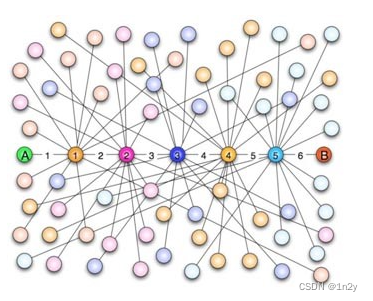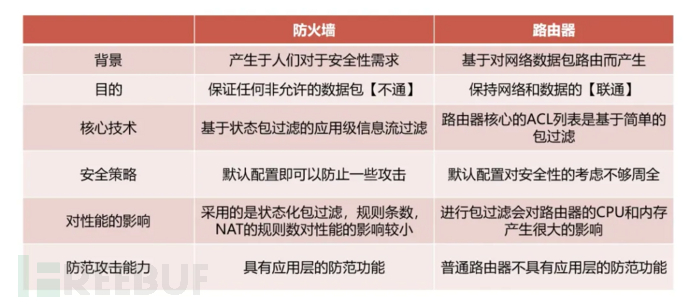A
(1) 输入格式说明:
以指数递降方式输入多项式非零项系数和指数(绝对值均为不超过1000的整数)。数字间以空格分隔。
(2) 输出格式说明:
以与输入相同的格式输出导数多项式非零项的系数和指数。数字间以空格分隔,但结尾不能有多余空格。
(3) 样例输入与输出:
输入1:
3 4 -5 2 6 1 -2 0
输出1:
12 3 -10 1 6 0
输入2:
-1000 1000 999 0
输出2:
-1000000 999
输入3:
1000 0
输出3:
0 0代码:
#include <iostream>
#include <chrono>
#include <math.h>
#include <ctime>
#include <stack>
#include <sstream>
#include <string>#define SIZE 1000
#define ADDSIZE 100
using namespace std;
typedef struct
{int* base;int* top;int stacksize;
}Stack;void initstack(Stack* S)
{S->base = (int*)malloc(SIZE * sizeof(int));if (!S->base) exit(EOVERFLOW);S->top = S->base;S->stacksize = SIZE;
}int isEmpty(Stack* S)
{return S->base == S->top;
}int gettop(Stack* S)
{if (S->base == S->top) exit(0);elsereturn *(--S->top);
}void push(Stack* S, int e)
{if (S->top - S->base >= S->stacksize){exit(EOVERFLOW);}*S->top++ = e;
}void Num(string& input, Stack* numstack) {istringstream iss(input);int num;while (iss >> num) {push(numstack,num);iss.ignore(); }
}
int main()
{int count = 0;int coe, ind;string s;getline(cin, s);Stack T1;initstack(&T1);Stack T2;initstack(&T2);Num(s, &T1);while (!isEmpty(&T1)){push(&T2, gettop(&T1));++count;}while (!isEmpty(&T2)){coe = gettop(&T2);ind = gettop(&T2);if (coe != 0 && ind != 0){cout << coe * ind << " " << ind - 1 << " ";}else if (coe != 0 && count == 2){cout << 0 << " " << 0;}else {cout << "";}}return 0;
}B
设二叉树的结点的数据域的类型为char,给定一棵二叉树的先序遍历序列和中序遍历序列,还原该二叉树,并输出二叉树的深度和叶子节点的数量。
用例1
-*+abc/de
a+b*c-d/e
4
5
用例2
ab
ba
2
1
用例3
*c-ab
c*a-b
3
3
用例4
A
A
1
1
说明:用例的前两行分别为输入的先序和中序序列,这两个序列中不能有重复的字符,后两行分别为计算得出的二叉树的深度和叶子数量。
#include <iostream>
#include <vector>
#include <string>
#include <stack>
#include <iomanip>
#include <unordered_map>
using namespace std;struct TreeNode {char data;TreeNode* left;TreeNode* right;
};TreeNode* buildTree(string preorder, string inorder, int start, int end, int& index) {if (start > end) {return nullptr;}TreeNode* root = new TreeNode;root->data = preorder[index++];root->left = root->right = nullptr;int i;for (i = start; i <= end; i++) {if (inorder[i] == root->data) {break;}}root->left = buildTree(preorder, inorder, start, i - 1, index);root->right = buildTree(preorder, inorder, i + 1, end, index);return root;
}int getDepth(TreeNode* root) {if (root == nullptr) {return 0;}int leftDepth = getDepth(root->left);int rightDepth = getDepth(root->right);return 1 + max(leftDepth, rightDepth);
}int getLeafCount(TreeNode* root) {if (root == nullptr) {return 0;}if (root->left == nullptr && root->right == nullptr) {return 1;}int leftCount = getLeafCount(root->left);int rightCount = getLeafCount(root->right);return leftCount + rightCount;
}int main() {string preorder, inorder;cin >> preorder;cin >> inorder;int index = 0;int n = inorder.size() - 1;TreeNode* root = buildTree(preorder, inorder, 0, n, index);int depth = getDepth(root);int leafCount = getLeafCount(root);cout << depth << endl;cout << leafCount << endl;return 0;
}
C
“六度空间”理论又称作“六度分隔(Six Degrees of Separation)”理论。这个理论可以通俗地阐述为:“你和任何一个陌生人之间所间隔的人不会超过六个,也就是说,最多通过五个人你就能够认识任何一个陌生人。”如下图所示。

“六度空间”理论虽然得到广泛的认同,并且正在得到越来越多的应用。但是数十年来,试图验证这个理论始终是许多社会学家努力追求的目标。然而由于历史的原因,这样的研究具有太大的局限性和困难。随着当代人的联络主要依赖于电话、短信、微信以及因特网上即时通信等工具,能够体现社交网络关系的一手数据已经逐渐使得“六度空间”理论的验证成为可能。 假如给你一个社交网络图,请你对每个节点计算符合“六度空间”理论的结点占结点总数的百分比。
(1) 输入格式说明:
输入第1行给出两个正整数,分别表示社交网络图的结点数N (1<N<=104,表示人数)、边数M(<=33*N,表示社交关系数)。随后的M行对应M条边,每行给出一对正整数,分别是该条边直接连通的两个结点的编号(节点从1到N编号),表示两个人互相认识。
(2) 输出格式说明:
对每个结点输出与该结点距离不超过6的结点数占结点总数的百分比,精确到小数点后2位。每个结节点输出一行,格式为“结点编号:(空格)百分比%”。自身到自身的距离为0,故计算的时候也把自身算入。
输入用例1
10 9
1 2
2 3
3 4
4 5
5 6
6 7
7 8
8 9
9 10
输出用例1
1: 70.00%
2: 80.00%
3: 90.00%
4: 100.00%
5: 100.00%
6: 100.00%
7: 100.00%
8: 90.00%
9: 80.00%
10: 70.00%
输入用例2
10 8
1 2
2 3
3 4
4 5
5 6
6 7
7 8
9 10
输出用例2
1: 70.00%
2: 80.00%
3: 80.00%
4: 80.00%
5: 80.00%
6: 80.00%
7: 80.00%
8: 70.00%
9: 20.00%
10: 20.00%
输入用例3
11 10
1 2
1 3
1 4
4 5
6 5
6 7
6 8
8 9
8 10
10 11
输出用例3
1: 100.00%
2: 90.91%
3: 90.91%
4: 100.00%
5: 100.00%
6: 100.00%
7: 100.00%
8: 100.00%
9: 100.00%
10: 100.00%
11: 81.82%代码:
#include <iostream>
#include <vector>
#include <string>
#include <stack>
#include <iomanip>
#include <queue>
using namespace std;
vector<vector<int>> graph;
int N, M;void calculateSixDegrees() {for (int node = 1; node <= N; node++) {vector<bool> visited(N + 1, false);queue<int> q;visited[node] = true;q.push(node);int level = 0;int total = 1; while (!q.empty() && level < 6) {int nodesAtCurrentLevel = q.size();for (int i = 0; i < nodesAtCurrentLevel; i++) {int currentNode = q.front();q.pop();for (int neighbor : graph[currentNode]) {if (!visited[neighbor]) {visited[neighbor] = true;q.push(neighbor);total++;}}}level++;}double percentage = (static_cast<double>(total) / N) * 100;cout << node << ": " << fixed << setprecision(2) << percentage << "%" << endl;}
}int main() {cin >> N >> M;graph.resize(N + 1);for (int i = 0; i < M; i++) {int u, v;cin >> u >> v;graph[u].push_back(v);graph[v].push_back(u);}calculateSixDegrees();return 0;
}
D
实现一种简单原始的文件相似度计算,即以两文件的公共词汇占总词汇的比例来定义相似度。为简化问题,这里不考虑中文(因为分词太难了),只考虑长度不小于3、且不超过10的英文单词,长度超过10的只考虑前10个字母。
(1) 输入格式说明:
输入首先给出正整数N(<=100),为文件总数。随后按以下格式给出每个文件的内容:首先给出文件正文,最后在一行中只给出一个字符“#”,表示文件结束。在N个文件内容结束之后,给出查询总数M(<=10000),随后M行,每行给出一对文件编号,其间以空格分隔。这里假设文件按给出的顺序从1到N编号。
(2) 输出格式说明:
针对每一条查询,在一行中输出两文件的相似度,即两文件的公共词汇量占两文件总词汇量的百分比,精确到小数点后1位。注意这里的一个“单词”只包括仅由英文字母组成的、长度不小于3、且不超过10的英文单词,长度超过10的只考虑前10个字母。单词间以任何非英文字母隔开。另外,大小写不同的同一单词被认为是相同的单词,例如“You”和“you”是同一个单词。
输入用例1
3
Aaa Bbb Ccc
#
Bbb Ccc Ddd
#
Aaa2 ccc Eee
is at Ddd@Fff
#
2
1 2
1 3
输出用例1
50.0%
33.3%
输入用例2
2
This is a test for repeated repeated words.
#
All repeated words shall be counted only once. A longlongword is the same as this longlongwo.
#
1
1 2
输出用例2
23.1%
输入用例3
2
This is a test to show ...
#
Not similar at all
#
1
1 2
输出用例3
0.0%
输入用例4
4 2
These two files are the same
#
these.two_files are the SAME
#
1
1 2
输出用例4
100.0%代码:
#include <stdio.h>
#include <stdlib.h>
#include <string.h>
#include <ctype.h>#define MAXS 10
#define MINS 3
#define MAXB 5
#define MAXTable 500009typedef char ElementType[MAXS + 1];typedef struct FileEntry {int words;struct FileEntry* Next;
}WList;typedef struct WordEntry {int FileNo;struct WordEntry* Next;
}FList;struct HashEntry {ElementType Element;int FileNo;FList* InvIndex;
};typedef struct HashTbl {int TableSize;struct HashEntry* TheCells;
}HashTable;HashTable* Table_Init(int TableSize) {HashTable* H = malloc(sizeof(HashTable));H->TableSize = TableSize;H->TheCells = malloc(sizeof(struct HashEntry) * H->TableSize);while (TableSize) {H->TheCells[--TableSize].FileNo = 0;H->TheCells[TableSize].InvIndex = NULL;}return H;
}WList* FileIndex_Init(int Size) {WList* F = malloc(sizeof(FList) * Size);while (Size) {F[--Size].words = 0;F[Size].Next = NULL;}return F;
}int GetWord(ElementType Word) {char c;int p = 0;scanf("%c", &c);while (!isalpha(c) && (c != '#'))scanf("%c", &c);if (c == '#')return 0;while (isalpha(c) && (p < MAXS)) {Word[p++] = tolower(c);scanf("%c", &c);}while (isalpha(c))scanf("%c", &c);if (p < MINS)return GetWord(Word);else {Word[p] = '\0';return 1;}
}int Hash(char* key, int p) {unsigned int h = 0;while (*key != '\0')h = (h << MAXB) + (*key++ - 'a');return h % p;
}int Find(ElementType key, HashTable* H) {int pos = Hash(key, H->TableSize);while (H->TheCells[pos].FileNo && strcmp(H->TheCells[pos].Element, key)) {pos++;if (pos == H->TableSize)pos -= H->TableSize;}return pos;
}int InsertAndIndex(int FileNo, ElementType key, HashTable* H) {FList* F;int pos = Find(key, H);if (H->TheCells[pos].FileNo != FileNo) {if (!H->TheCells[pos].FileNo)strcpy(H->TheCells[pos].Element, key);H->TheCells[pos].FileNo = FileNo;F = malloc(sizeof(FList));F->FileNo = FileNo;F->Next = H->TheCells[pos].InvIndex;H->TheCells[pos].InvIndex = F;return pos;}elsereturn -1;
}void FileIndex(WList* File, int FileNo, int pos) {WList* W;if (pos < 0)return;W = malloc(sizeof(WList));W->words = pos;W->Next = File[FileNo - 1].Next;File[FileNo - 1].Next = W;File[FileNo - 1].words++;
}double work(WList* File, int F1, int F2, HashTable* H) {int temp;WList* W;FList* F;if (File[F1 - 1].words > File[F2 - 1].words) {temp = F1;F1 = F2;F2 = temp;}temp = 0;W = File[F1 - 1].Next;while (W) {F = H->TheCells[W->words].InvIndex;while (F) {if (F->FileNo == F2)break;F = F->Next;}if (F)temp++;W = W->Next;}return ((double)(temp * 100) / (double)(File[F1 - 1].words + File[F2 - 1].words - temp));
}
struct Find {int x, y;
};
int main() {int n, m, x = 0;ElementType word;HashTable* H;WList* File;struct Find FIND[100];scanf("%d", &n);if (getchar() != '\n'){scanf("%d", &n);}File = FileIndex_Init(n);H = Table_Init(MAXTable);for (int i = 0; i < n; i++)while (GetWord(word))FileIndex(File, i + 1, InsertAndIndex(i + 1, word, H));scanf("%d", &m);for (int i = 0; i < m; i++) {scanf("%d %d", &FIND[i].x, &FIND[i].y);}for (int i = 0; i < m - 1; i++){printf("%.1f%c\n", work(File, FIND[i].x, FIND[i].y, H), '%');}printf("%.1f%c", work(File, FIND[m - 1].x, FIND[m - 1].y, H), '%');return 0;
}E
Excel可以对一组纪录按任意指定列排序。现请编写程序实现类似功能。
(1) 输入格式说明:
输入的第1行包含两个正整数 N (<=100000) 和 C,其中 N 是纪录的条数,C 是指定排序的列号。之后有 N 行,每行包含一条学生纪录。每条学生纪录由学号(6位数字,保证没有重复的学号)、姓名(不超过8位且不包含空格的字符串)、成绩([0, 100]内的整数)组成,相邻属性用1个空格隔开。
(2) 输出格式说明:
在 N 行中输出按要求排序后的结果,即:当 C=1 时,按学号递增排序;当 C=2时,按姓名的非递减字典序排序;当 C=3 时,按成绩的非递减排序。当若干学生具有相同姓名或者相同成绩时,则按他们的学号递增排序。
输入用例1
3 1
000007 James 85
000010 Amy 90
000001 Zoe 60
输出用例1
000001 Zoe 60
000007 James 85
000010 Amy 90
输入用例2
4 2
000007 James 85
000010 Amy 90
000001 Zoe 60
000002 James 98
输出用例2
000010 Amy 90
000002 James 98
000007 James 85
000001 Zoe 60
输入用例3
4 3
000007 James 85
000010 Amy 90
000001 Zoe 60
000002 James 90
输出用例3
000001 Zoe 60
000007 James 85
000002 James 90
000010 Amy 90
输入用例4
1 2
999999 Williams 100
输出用例4
999999 Williams 100代码:
#include <iostream>
#include <vector>
#include <algorithm>
using namespace std;struct Student {string id;string name;int score;
};bool compare(const Student& s1, const Student& s2) {return s1.id < s2.id;
}bool compareName(const Student& s1, const Student& s2) {if (s1.name != s2.name)return s1.name < s2.name;return s1.id < s2.id;
}bool compareScore(const Student& s1, const Student& s2) {if (s1.score != s2.score)return s1.score < s2.score;return s1.id < s2.id;
}int main() {int N, C;cin >> N >> C;vector<Student> records(N);for (int i = 0; i < N; i++) {cin >> records[i].id >> records[i].name >> records[i].score;}if (C == 1)sort(records.begin(), records.end(), compare);else if (C == 2)sort(records.begin(), records.end(), compareName);else if (C == 3)sort(records.begin(), records.end(), compareScore);for (int i = 0; i < N; i++) {cout << records[i].id << " " << records[i].name << " " << records[i].score << endl;}return 0;
}







